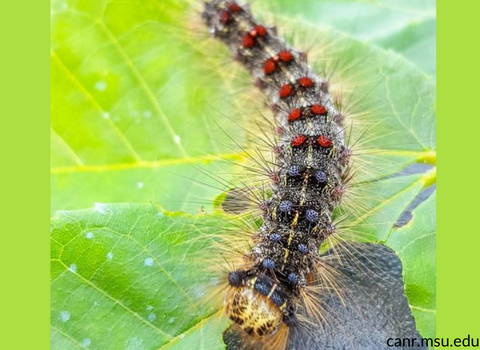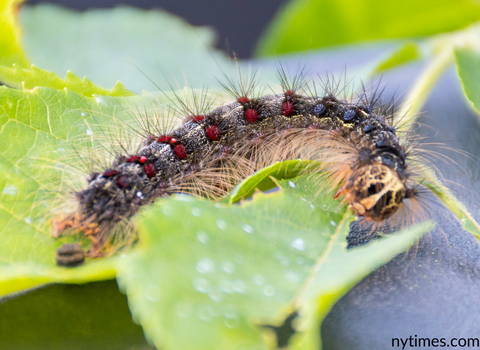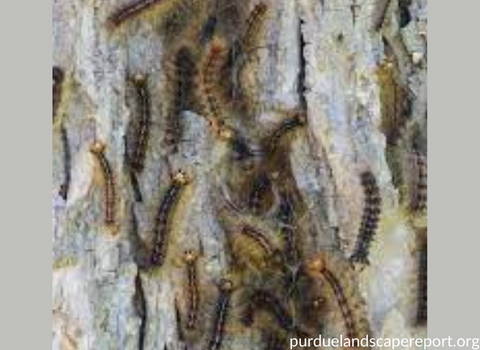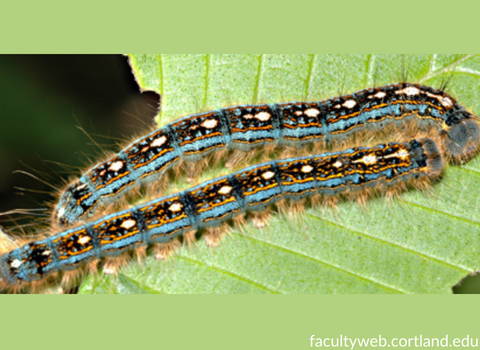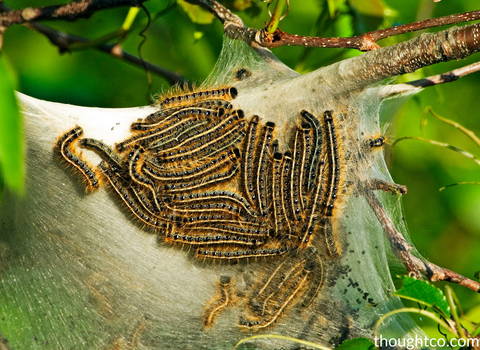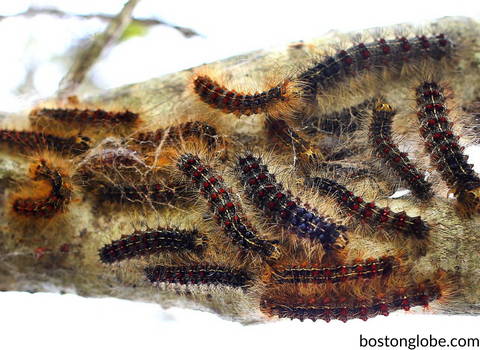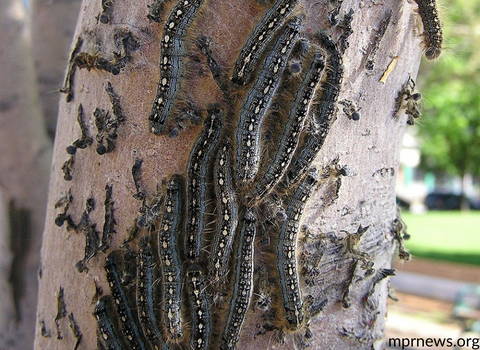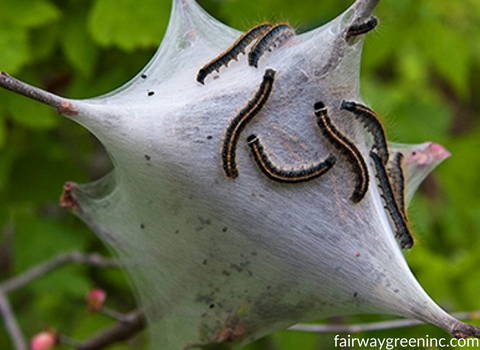Gypsy Moth Caterpillar Pictures
Each year, a gypsy moth or Lymantria dispar can complete one generation. Eggs usually hatch during the spring season. After hatching, caterpillars will leave the egg masses and start climbing up and out the end of tree branches or shoots. They will then drop down using a silk strand.
The larvae will dangle in the air and will wait to be blown by the wind. This process is called ballooning. These larvae are usually 0.25 inches long and have long hairs making them buoyant and disperse in the wind.
Stock Photos to Help in Identifying Moth Caterpillar Species
Different moth caterpillar species can be found in your backyard and the use of illustrations will help you determine which gypsy moth larva is infesting your yard. Below are more images that can guide you in identifying the insect.
Gypsy Moth Caterpillars
Gypsy moths have distinctive markings such as the five pairs of blue dots and followed by six pairs of red dots just down the length of their back. Young caterpillars may look black and dark markings will only be visible after a week or two. Caterpillars hatch usually in April or May and will feed continuously till early July.
Forest Tent Caterpillar
This type of moth caterpillar has a velvety sky-blue skin marked with a black stripe and a row of white “keyhole” or “footprints” down on its back. Despite the name, this caterpillar does not also make a tent.
Eastern Tent Caterpillars
It has a yellow and white stripe running down the center of its back and the side has small blue spots.
These caterpillars, build tents in trees and these tents may linger throughout summer before it falls apart. Though they rarely cause damages, people tend to permanently damage trees because of excessive pruning as they try to cut the tents or burning them to kill the insect.
Tree owners should just wait till dusk, wear gloves, and strip the tents from tree trunks. Then they can plunge the caterpillars and tents into soapy water, bury it, or burn it far from the trees.
Tree Species that Gypsy Moth Caterpillar Likes
Gypsy Moths
Gypsy moth and its caterpillars feed on crab apple, oaks, willow, aspen, linden, birch, and over 300 other tree. They are not known to building silk tents, but they can strip trees during outbreaks.
Forest Tent Caterpillar
During an outbreak, these caterpillars can strip sugar maple, oaks, aspen, and other trees.
Eastern Tent Caterpillar
This caterpillar builds their tents in branches of wild cherries, crabapple, cherry, and apple trees.


